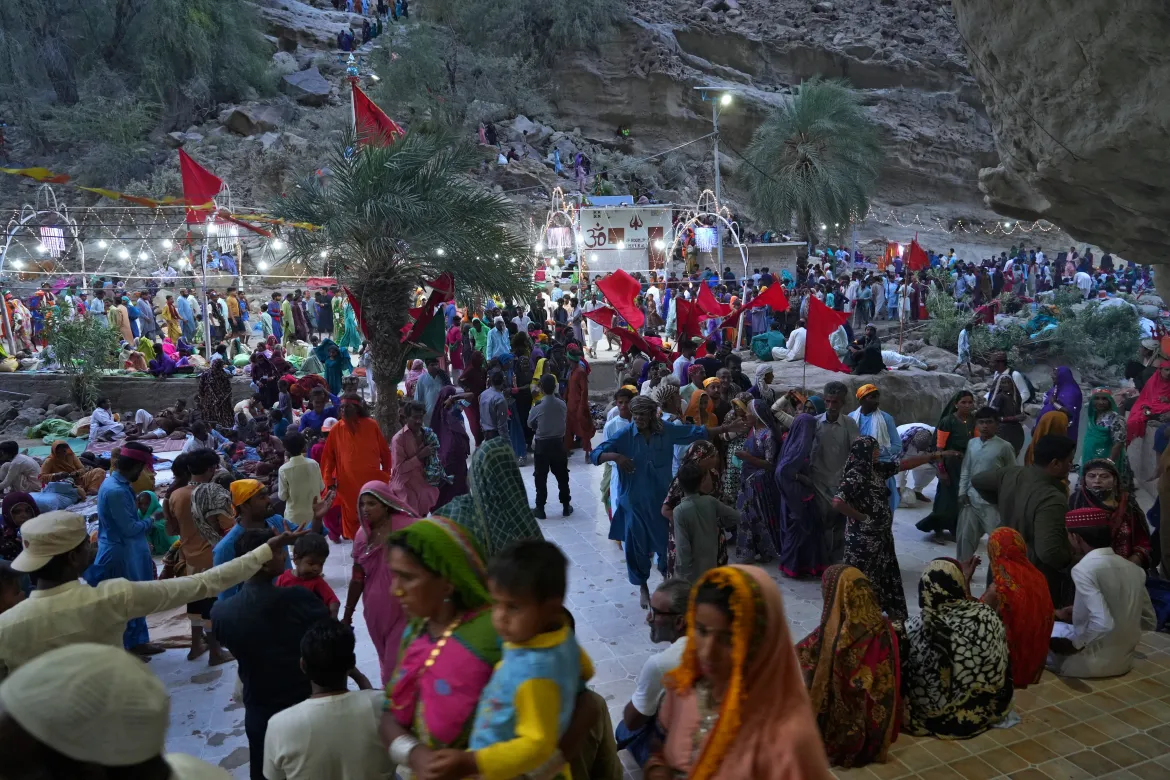Among the 51 Shakti Peethas of Maa Shakti, Hinglaj Mata holds a unique place because it is located outside India, in Lasbela district of Balochistan, Pakistan. It lies within the Hingol National Park, along the banks of the Hingol River, about 250 km from Karachi. Unlike many grand temples, Hinglaj is a natural cave shrine. Here, it is believed that the Brahmarandhra (head/top of the skull) of Maa Sati fell, making it one of the most powerful Shakti Peeths.
The temple is known by many names: Hinglaj Bhavani, Hingula Devi, Hinglaj Mata, and locally as Nani Mandir. It is revered not only by Hindus but also by Muslims and local tribes who consider her a protective goddess of the region.
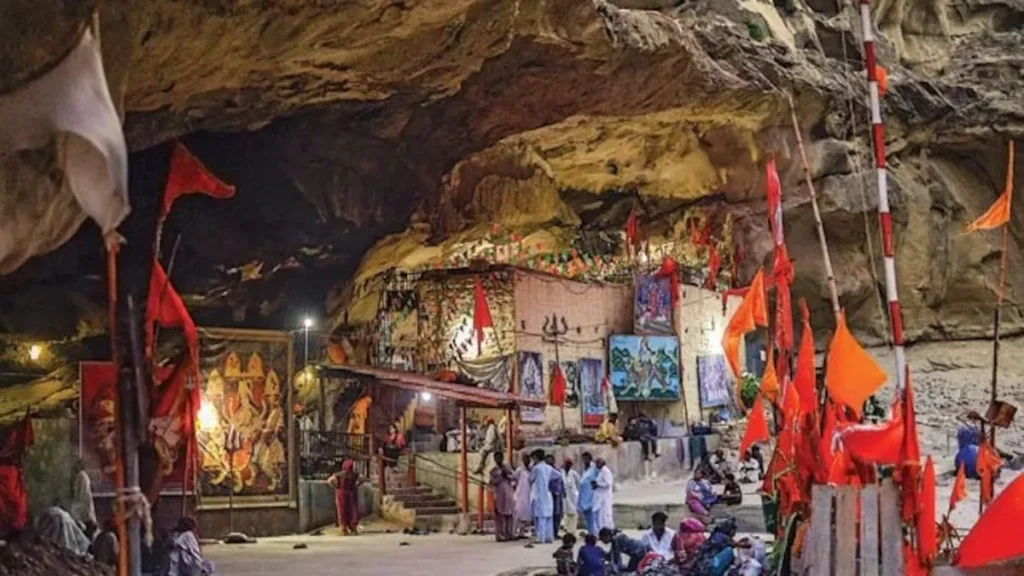
Mythological Significance
The legend of Hinglaj Mata comes from the story of Sati and Shiva:
- When Sati sacrificed herself at her father Daksha’s yajna, Lord Shiva, in grief and fury, carried her body and wandered across the universe.
- To restore cosmic balance, Lord Vishnu released his Sudarshan Chakra, which cut Sati’s body into pieces.
- Wherever her body parts fell became sacred spots known as Shakti Peethas.
At Hinglaj, the head (Brahmarandhra) of Sati is believed to have fallen. This gives the site special significance because the head represents consciousness, wisdom, and divine energy. Worship here is believed to purify the mind and guide devotees toward knowledge and liberation.
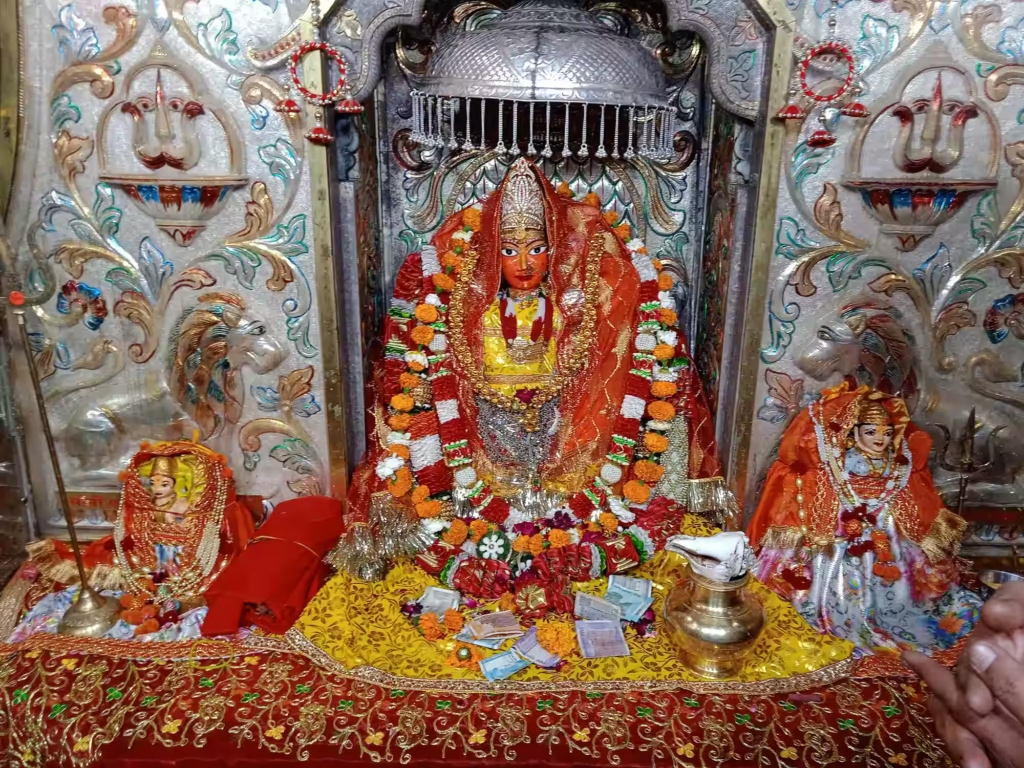
The Cave Shrine of Hinglaj
Unlike many temples with gopurams and stone carvings, Hinglaj is a small cave temple in a desert landscape.
- Sanctum: Inside the cave, a natural stone smeared with sindoor (vermillion) is worshipped as the goddess. There is no idol.
- Atmosphere: The shrine is simple but carries immense spiritual energy. The desert mountains around it create a sense of isolation and sanctity.
- Local Faith: Muslims and Hindus alike call the temple “Nani Mandir” and regard Hinglaj Mata as a guardian deity. Local tribes often participate in maintaining the shrine and respect the goddess deeply.
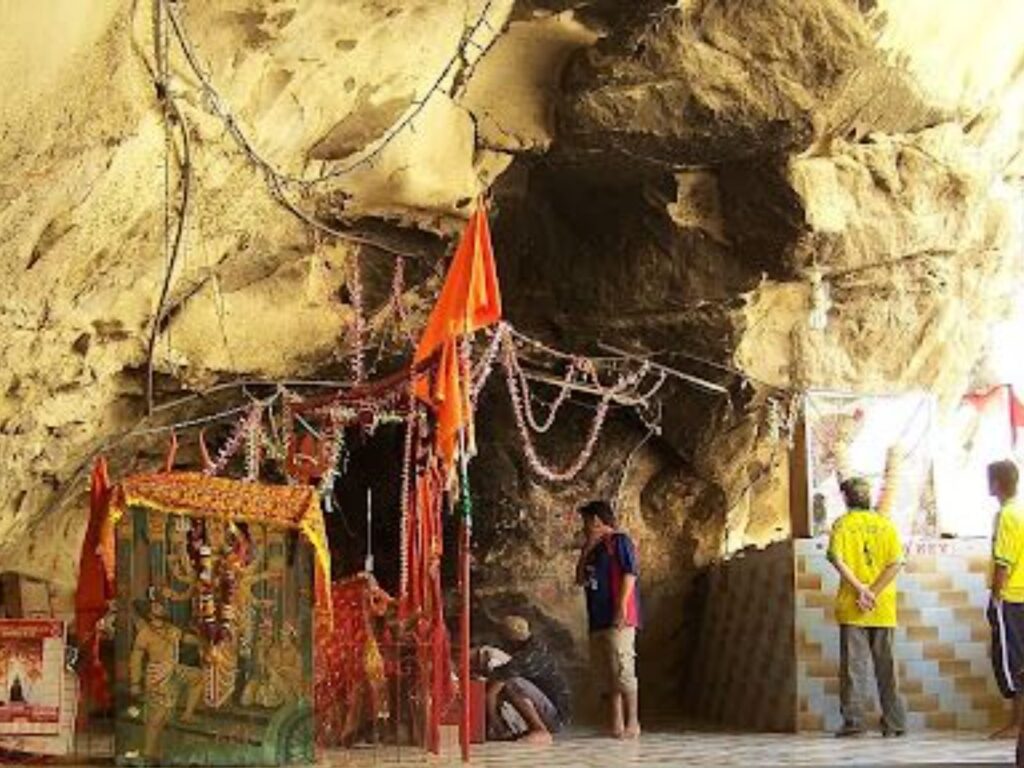
Historical References
The worship of Hinglaj Mata is ancient and finds mention in multiple texts and traditions:
- Devi Bhagavatam and other Puranas mention Hinglaj as one of the 51 Shakti Peethas.
- Tantric texts consider Hinglaj Mata a powerful seat of Shakti, important for advanced spiritual practices.
- Medieval Saints from Sindh and Gujarat recorded pilgrimages to Hinglaj. For centuries, Hindus from Rajasthan, Gujarat, and Sindh have traveled across deserts to reach the shrine.
- Shared reverence: Even Sufi saints in Balochistan referred to Hinglaj as a sacred place, showing its wide cultural influence.
Hinglaj Yatra (Pilgrimage)
The annual pilgrimage to Hinglaj Mata, called Hinglaj Yatra, is one of the most important Hindu pilgrimages outside India.
- Timing: The yatra usually takes place in April, attracting thousands of devotees from Sindh, Gujarat, and Rajasthan.
- Journey: Traditionally, pilgrims traveled by foot or camel through the harsh Makran desert. Today, with roads, buses, and jeeps, access has improved, but the spirit of devotion remains.
- Rituals: Devotees chant bhajans, carry coconuts, sweets, r ice, and red cloth as offerings. At the cave, they smear vermilion on the sacred stone and seek blessings.
- Inclusive nature: Not just Hindus, but many Muslims in the region also visit and offer respect to Hinglaj Mata, addressing her as “Nani”.
The Hinglaj Yatra is considered equivalent in merit to difficult pilgrimages like Amarnath Yatra or Kailash Mansarovar Yatra.
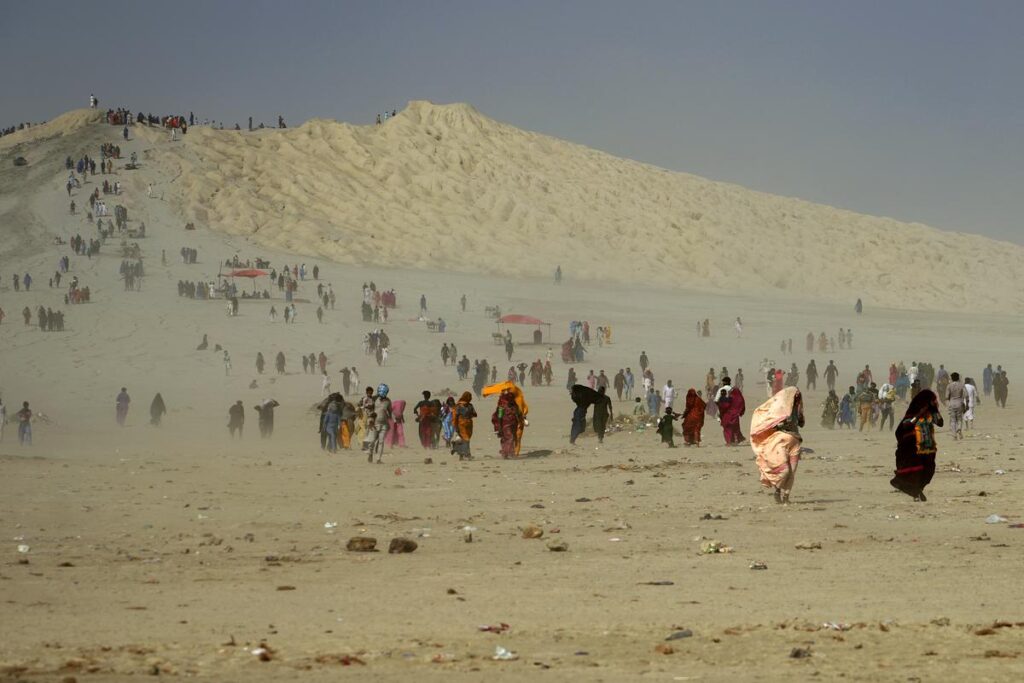
Symbolism of Sati’s Head at Hinglaj
The fall of the head at Hinglaj carries deep meaning:
- The head represents knowledge and consciousness. Hence, Hinglaj is seen as the seat of wisdom.
- Worship here is believed to awaken spiritual awareness.
- Devotees seek clarity of thought, removal of ignorance, and divine guidance.
- Many believe Hinglaj Mata grants mental strength, courage, and peace.
This is why Hinglaj Mata is often called the Mother of Knowledge and Protector of Faith.
Hingol National Park and Hinglaj Mata
The Hinglaj Mata temple lies within Hingol National Park, one of Pakistan’s largest protected areas. This adds both challenges and beauty to the pilgrimage.
- Landscape: The temple is surrounded by rugged mountains, dry riverbeds, and unique rock formations. The area is known for the famous “Princess of Hope” rock statue, a naturally shaped cliff that resembles a woman.
- Hingol River: The temple is located on the banks of the Hingol River, which adds a natural element of purity and sanctity to the shrine.
- Conservation: Since the shrine lies within a protected park, environmental conservation rules apply, ensuring that the pilgrimage does not harm the delicate ecosystem.
Thus, the Hinglaj Mata shrine combines spiritual sanctity with natural beauty, making the pilgrimage an unforgettable experience.
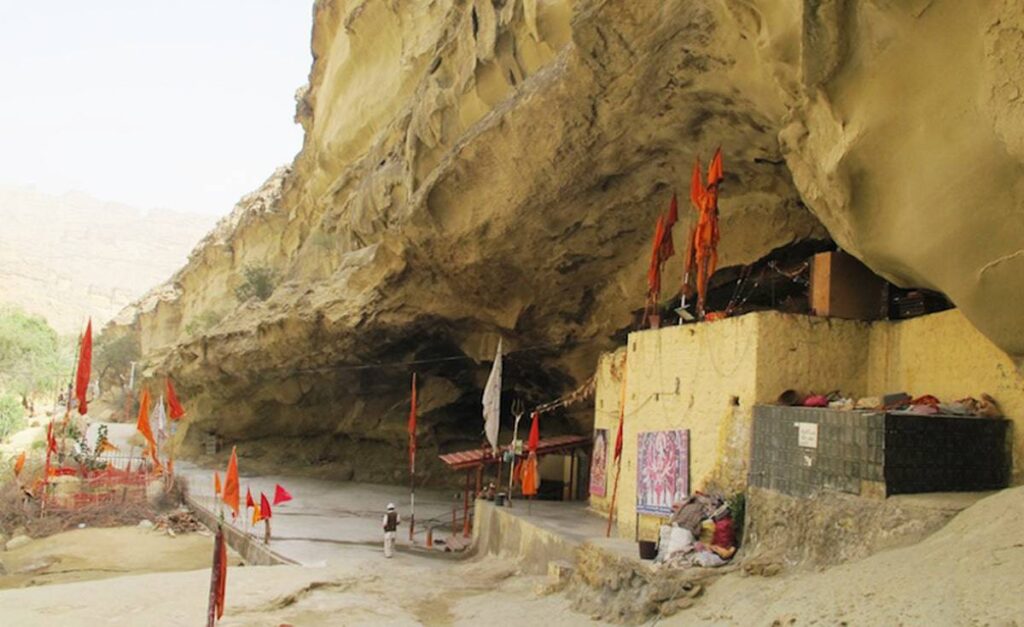
FAQs for Hinglaj Mata Temple
1. Why is Hinglaj Mata Temple famous?
Hinglaj Mata Temple is one of the most revered Shakti Peethas, located in Pakistan, and is a major pilgrimage site for Hindus.
2. Where is Hinglaj Mata Temple located?
It is situated in the Hingol National Park, Balochistan, Pakistan, along the Makran coast.
3. What is worshipped at Hinglaj Mata Temple?
The temple is dedicated to Goddess Hinglaj Mata (a form of Durga/Shakti).
4. What are the temple timings?
As it is located in a natural cave, there are no fixed timings, but pilgrims usually visit during daylight hours.
5. Is photography allowed inside Hinglaj Mata Temple?
Photography is allowed in the surrounding area, but inside the cave, it is generally restricted out of respect.
6. What is the significance of Hinglaj Mata as a Shakti Peetha?
It is believed that the head of Goddess Sati fell here, making it one of the most important Shakti Peethas.
7. How can I reach Hinglaj Mata Temple?
Pilgrims travel via Karachi or Lasbela, and then by road to Hingol National Park, followed by a short trek.
8. Are there any special rituals at Hinglaj Mata Temple?
Yes, the annual Hinglaj Yatra attracts thousands of devotees, where rituals, bhajans, and offerings are performed.
9. Is there accommodation near Hinglaj Mata Temple?
Accommodation is basic, with pilgrim tents and lodges set up during the Yatra season.
10. What is the best time to visit Hinglaj Mata Temple?
The annual Hinglaj Yatra in April is the best time, when thousands of devotees gather for the pilgrimage.

